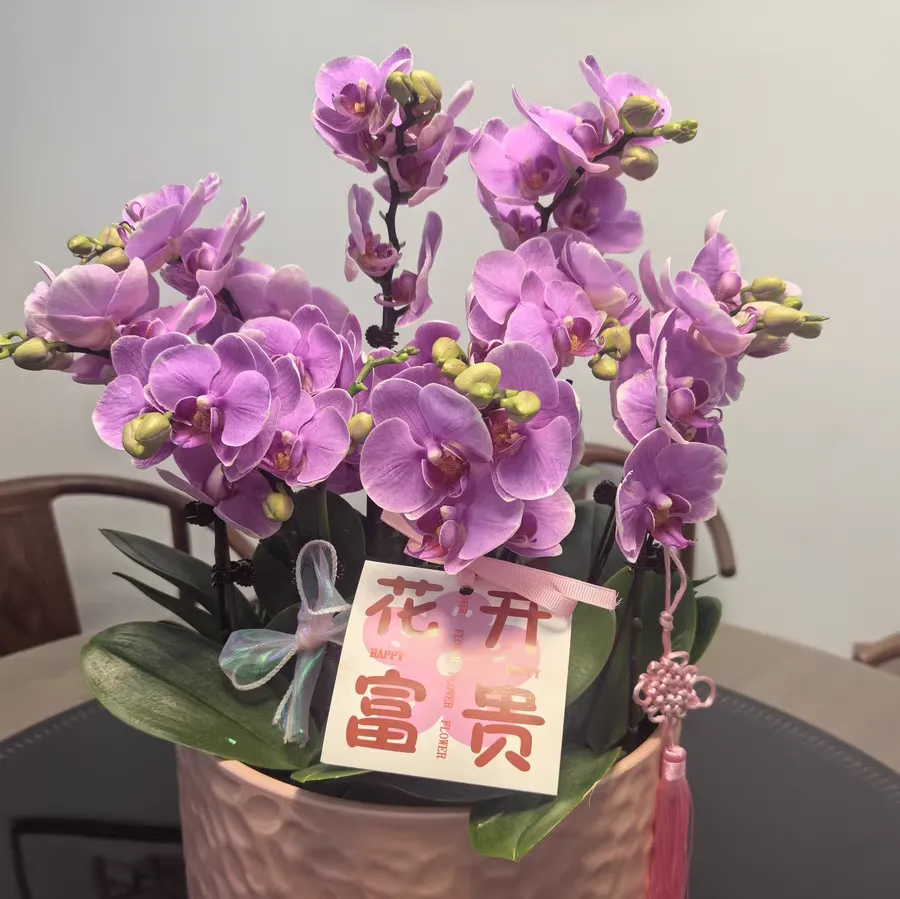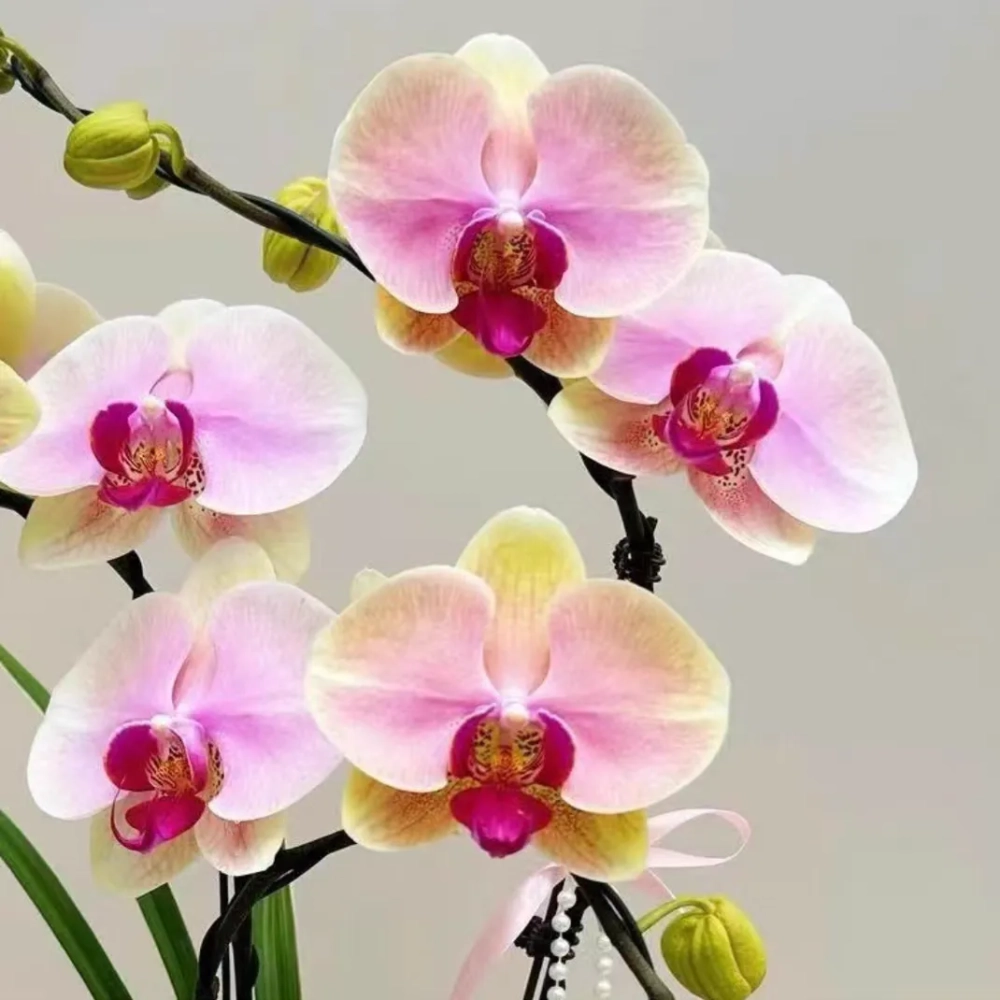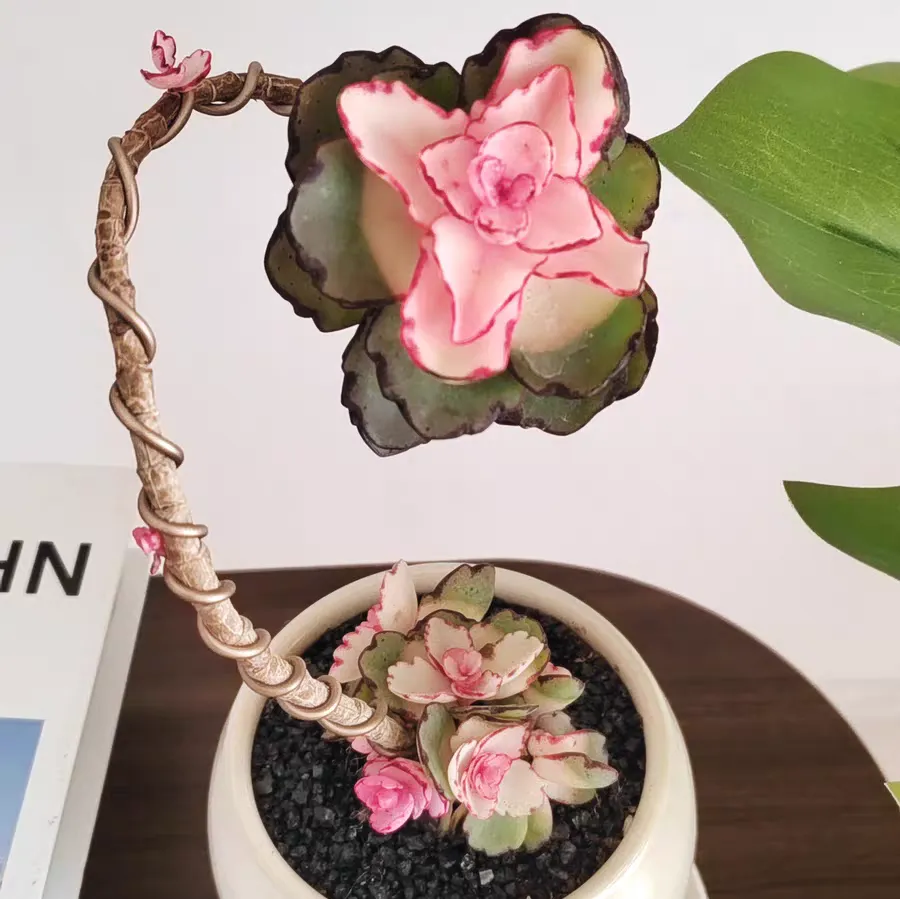Plants of the family Anthericaceae are shrubs or herbs, evergreen or deciduous, with diverse forms. They are mainly distributed in the temperate and tropical regions of the Southern Hemisphere. The family consists of 8 genera and about 285 species. Many of them have been introduced as ornamental flowers to various parts of the world, and the genus Chlorophytum is the most commonly cultivated one.
In the world of plant enthusiasts, spider plants are deeply loved for their elegant postures and fresh temperaments. However, not all plants with the words "spider plant" in their names are truly plants of the Anthericaceae family. Today, let's take stock of several plants that are often mistaken for spider plants.
Moses-in-the-cradle (Mesembryanthemum cordifolium): Also known as heart-leaf ice plant, horned spider plant, cherry blossom spider plant, etc., it is a perennial evergreen herb of the genus Mesembryanthemum in the family Aizoaceae. Although its name contains "spider plant", it does not belong to the Anthericaceae family. Moses-in-the-cradle has beautiful leaf shapes and colors, and its flower colors are bright. It is an excellent choice for decorating living rooms and window sills. Its branches hang down, the leaves are thick and green, and the flower color is rose red. The flowering period is from spring to autumn, allowing people to enjoy both the flowers and the leaves. However, compared with true spider plants, Moses-in-the-cradle has an essential difference in taxonomy.
String of Pearls (Senecio rowleyanus): Also known as string-of-pearls, rosary vine, etc., it is a typical succulent plant belonging to the family Asteraceae. Its name also makes people think of spider plants, but in fact, it is a member of the succulent world. The leaves of String of Pearls are plump, full, and green ovals, shaped like pearls, hence the name. This plant has strong adaptability, is relatively drought - and cold - tolerant, and likes a warm, humid, and semi - shady environment. It grows best in loose and fertile soil. Its beauty lies in those round leaves, which are like wind chimes swaying in the wind, adding a fresh touch of green to the home.
Bridal Veil (Commelina coelestis): Also known as bridal grass, it is a perennial herb of the genus Commelina in the family Commelinaceae. Its name sounds romantic and elegant, but in fact, it has no direct connection with spider plants. The branches and leaves of Bridal Veil are soft and green, with many branches and lush growth. When trimmed into a spherical shape, the green leaves of Bridal Veil are dotted with many small white flowers, just like the bridal veil on a bride's head, fresh and beautiful. This plant prefers a semi - shady growth environment, avoiding direct strong sunlight. It only needs about 3 - 5 hours of scattered light per day. Its propagation method is relatively simple and can be propagated by cuttings.
From the above introduction, it is not difficult to find that although Moses-in-the-cradle, String of Pearls, and Bridal Veil all have the words "spider plant" in their names, they do not belong to the Anthericaceae family. These plants have different taxonomic classifications, each with its unique growth habits and ornamental values. Therefore, when purchasing and maintaining them, we need to distinguish carefully to avoid misunderstandings. At the same time, let's cherish these beautiful plants even more and add more color and vitality to our lives.
Which plants named "spider plant" are false spider plants?

Share with
Tagged in :




Leave a Reply